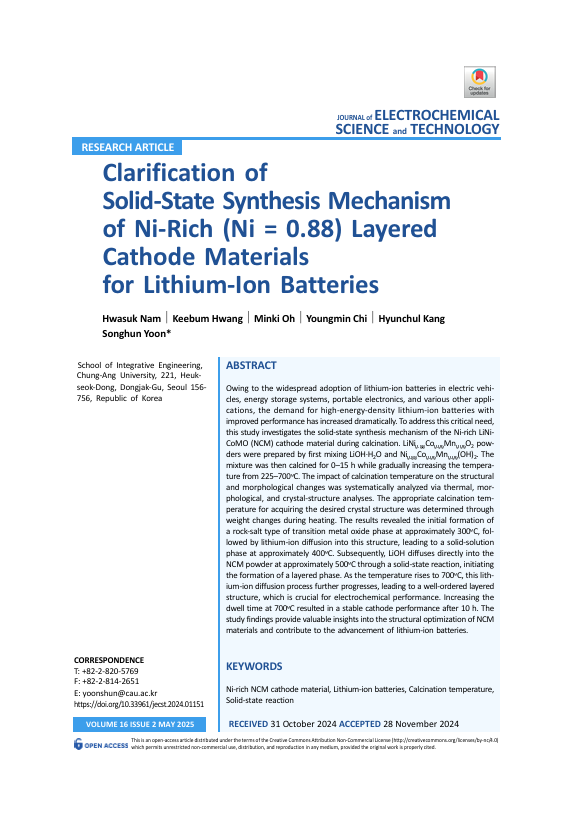
Clarification of Solid-State Synthesis Mechanism of Ni-Rich (Ni = 0.88) Layered Cathode Materials for Lithium-Ion Batteries
Owing to the widespread adoption of lithium-ion batteries in electric vehicles, energy storage systems, portable electronics, and various other applications, the demand for high-energy-density lithium-ion batteries with improved performance has increased dramatically. To address this critical need, this study investigates the solid-state synthesis mechanism of the Ni-rich LiNiCoMO (NCM) cathode material during calcination. LiNi0.88Co0.06Mn0.06O2 powders were prepared by first mixing LiOH·H2O and Ni0.88Co0.06Mn0.06(OH)2.. The mixture was then calcined for 0–15 h while gradually increasing the temperature from 225–700°C. The impact of calcination temperature on the structural and morphological changes was systematically analyzed via thermal, morphological, and crystal-structure analyses. The appropriate calcination temperature for acquiring the desired crystal structure was determined through weight changes during heating. The results revealed the initial formation of a rock-salt type of transition metal oxide phase at approximately 300°C, followed by lithium-ion diffusion into this structure, leading to a solid-solution phase at approximately 400°C. Subsequently, LiOH diffuses directly into the NCM powder at approximately 500°C through a solid-state reaction, initiating the formation of a layered phase. As the temperature rises to 700°C, this lithium-ion diffusion process further progresses, leading to a well-ordered layered structure, which is crucial for electrochemical performance. Increasing the dwell time at 700°C resulted in a stable cathode performance after 10 h. The study findings provide valuable insights into the structural optimization of NCM materials and contribute to the advancement of lithium-ion batteries. © 2025, Korean Electrochemical Society. All rights reserved.
|









